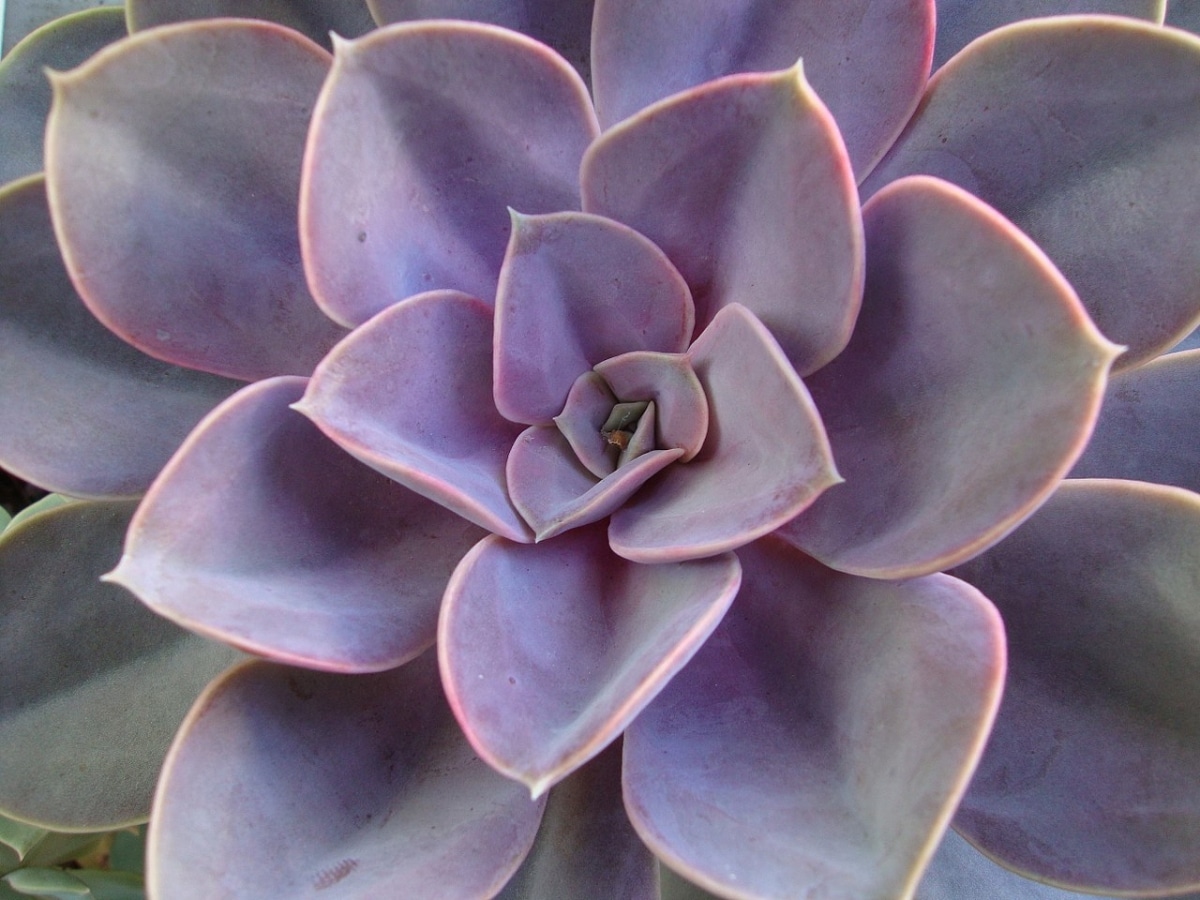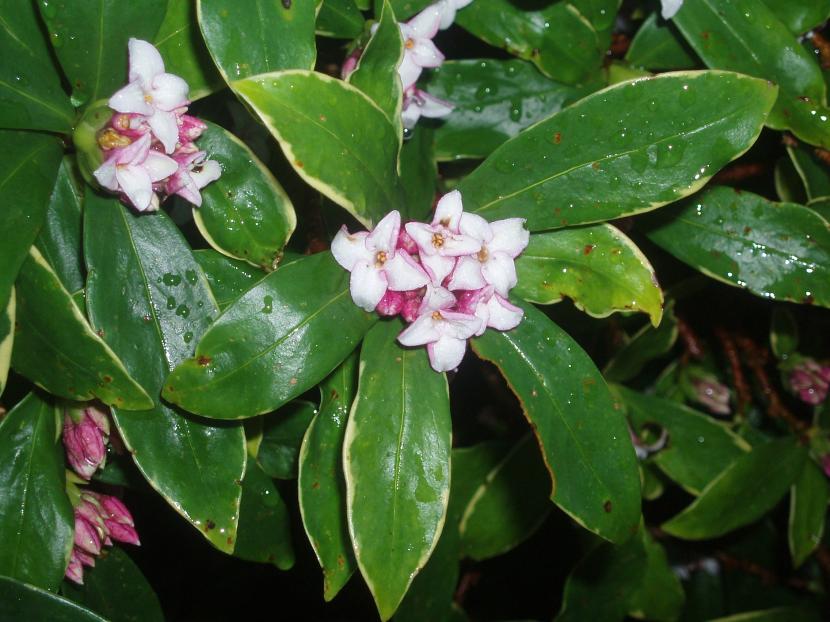
Growing plants in pots is something that we can all do, since it is not necessary to have a garden to be able to enjoy gardening; It is not even mandatory to have a patio or terrace, sometimes not even a balcony. And there are millions of species, many of which are adapted to living indoors.
So I think It is very important that you know what are the most common mistakes made when caring for potted plants, because in this way you can avoid them, or at least take the appropriate measures to correct them in case they occur.
Choosing unsuitable pots

The plants that we are going to grow in pots must be able to do well in them. But sometimes we make the mistake of choosing containers that either do not have holes in their base, or are not the right size. And it is that, we are not going to deny it, pots without holes are very nice but pose a danger to them, since the water remains stagnant inside, in contact with the roots.
Also, if the size of the pot is too small, it will only serve us a year at most; and if it is too large, as it will have a large amount of land there is a high risk that our crops will suffer damage as a result of excess humidity.
To avoid this error, you have to do the following:
- We will plant the plants in pots that have drainage holes. Always. We will only make an exception if said plant is aquatic, such as those used in aquariums.
- The new pot should measure an average of 5 centimeters in diameter and taller than the 'old' one. But yes: keep in mind that this measure is indicative: if the plant grows very fast and / or produces many suckers, it may be somewhat larger.
- If it is a carnivorous plant, it must be planted in plastic potsThis is a material that takes centuries to degrade and therefore does not release nutrients easily.
- In the case of epiphytic orchids, such as Phalaenopsis, we will plant them in transparent plastic pots, as their roots need light to carry out photosynthesis.
Place the plants in areas that are too dark or with a lot of light
The reality is the following: all plants need light, because they all need to photosynthesize. Without sunlight, they would not be able to produce their food. Therefore, when we take one home, or to the patio, we have to be clear about where it will grow best, if in shade, semi-shade, or with direct sun.
En general, those that are kept as "indoor plants" are for shade, but that does not mean that they should be put in a room or in an area of the garden that is dark, if not rather that they will be placed in areas where there is a lot of light but where the direct sun does not reach.
Outdoor plants, that is, those that are kept in patios, terraces, balconies and / or gardens, may need more or less light depending on their species. For instance:
- Shade plants: clivias, ferns, hostas, Japanese maple, aspidistras, ribbons, begonias, camellias.
- Sun plants: many palm trees (date palms, Livistona, Bismarckia, Roystonea, etc.), the vast majority of trees (Brachychiton, Tipuana, Acacia, citrus, etc.), flowers such as carnations or geraniums.
Water them a lot or a little

Potted plants depend a lot on who cares for them. Even the most resistant ones, if they are had without watering, they would not take long to dry out and die. But between a little and a lot, you have to try to find the balance, taking into account that it is easier to recover a plant that is going thirsty than another that, on the contrary, has received more water than it needs.
In the beginning, when you have no experience yet, it is convenient to use a digital humidity meter. It is not infallible, but it can help us to know whether or not we have to water our plants. In addition, it is easy to use, because you just have to introduce it into the ground and see what it tells us.
Another way to find out is to pick up the pot as soon as it is watered, and again after a few days.. When the land is dry it weighs less than when it is wet, so this difference in weight can serve as a guide.
But, what are the symptoms of lack and excess watering? The following:
- Lack of irrigation: new yellow leaves, drooping stems, sad appearance, dry even compact soil.
- Excess irrigation: lower leaves yellow, the soil is very humid, there may be verdina and / or mold.
In the first case, we can rehydrate the plant by submerging the pot in a basin of water for a few minutes, and from there increase the frequency of watering.
In the second, we will stop watering, we will remove the plant from the container and we will wrap the root bread with absorbent paper for one night; after that time, we will plant it again in it, and we will treat it with a systemic fungicide. And, of course, we will water less frequently.
Not using the correct substrate
In nurseries and garden stores, both physical and online, we find a wide variety of substrates for potted plants, something that is very good, as this allows us to choose the most suitable for ours. And is that if we put, for example, a specific substrate for acidic plants (like camellias, azaleas, or heather) a rosemary, it would have nutritional problems since it would lack calcium. And if we put a substrate with a pH higher than 6 on a Japanese maple, which wants acidic soil, it will have iron chlorosis as a consequence of the lack of iron.
Therefore, as important as watering well, is choosing a land that meets the nutritional needs of the plants. So there is no need to hesitate for a moment to buy the most suitable substrate for ours, such as:
- Bonsai: on sale here.
- Cactus and succulents: buy it here.
- Urban garden: on sale here.
- Orchid: get it here.
- Acidic plants (azaleas, hydrangeas, camellias, etc.): do not stay without him.
- Green plants (plants beautiful for their leaves, such as ferns, ribbons or aspidistra): get it here.
- Seedbeds: buy it here.
- Universal: depending on the pH it has, it can be used for the vast majority of plants, or only a few. Remember: if it has a pH of 6 or lower, it will do well with acidic ones, but if it is 7 or more, you can only use it for plants that tolerate a neutral or alkaline pH. So that there are no problems, we recommend this substrate.
Forgetting to fertilize potted plants

Image - Wikimedia / Mauronarf
A mistake that is made frequently is not to fertilize the plants that are kept in pots. You have to think that the land they have is wasting from minute 1 that their roots come into contact with it and receive water, so It is not surprising that if they are not fertilized, they stop growing and flowering.
In order to prevent that from happening, They must be paid with fertilizers or specific fertilizers during the spring and summer months. But yes, the indications that we will find on the product packaging must be followed, otherwise we could add more quantity than necessary and burn the plant.
But what to wear? Well, just like substrates, today we can get specific fertilizers for each type of plant, such as bonsai (for sale here), cactus and succulents (for sale here), palm trees (for sale here), citrus (for sale here), or the universal (for sale here), in addition to natural fertilizers such as guano, compost, mulch, seaweed compost (for sale here) or the earthworm humus.
Do not transplant them
From time to time it is time to plant them in larger pots, since if they are kept in the same for years they will stop growing; And not only that, but they could also die due to lack of space. Because, If we see that the roots are coming out of the drainage holes, or if they have been in it for more than two years, we have to think about planting them in a container larger.
Likewise, it is also usually a good idea to transplant newly purchased plants, since these are almost always well rooted after having spent months, maybe years in that same pot. If you have doubts, you just have to tap the pot, and then, with one hand, pull the plant upwards while holding the container with the other. In the event that you see that the root ball comes out whole, without falling apart, then it needs a change.

Yes, note that transplants are usually done in spring. It can also be done in autumn, but only in the event that there are no frosts in your area or that they are very weak (down to -2ºC). It should not be transplanted in winter, nor during a spring month in which temperatures drop below 0 degrees, as the plants would suffer, and if they are sensitive, they may not survive.
We hope that now your potted plants are more beautiful. And if you want them to grow fast, take note of what we tell you here: